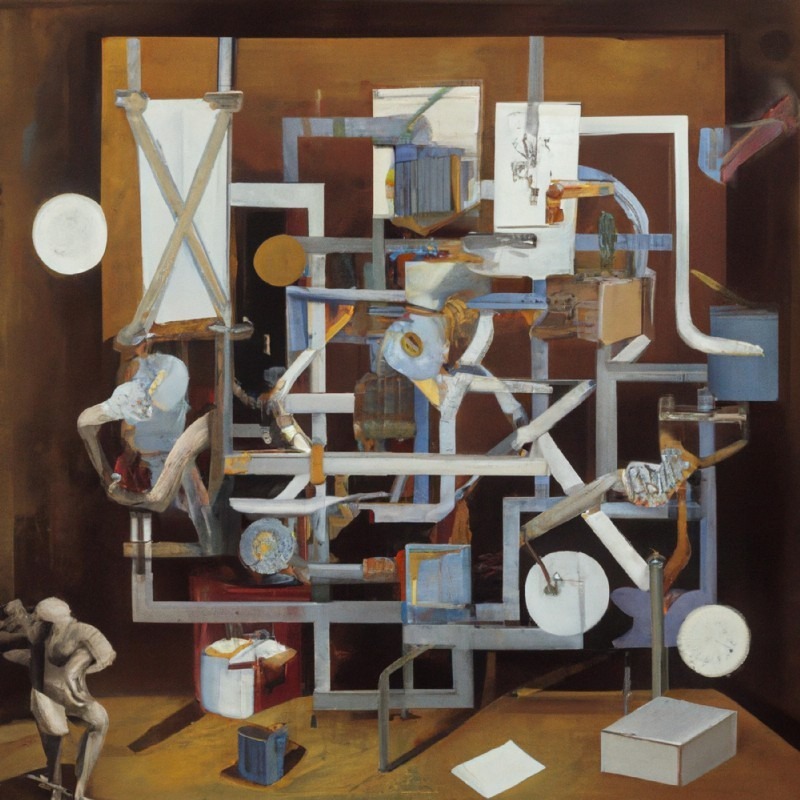Tag Archive for: Quantum Mechanics
Exploring the Quantum Frontier: Discovering the Potential of Quantum Sensing in Improving Sensitivity and Precision by Jack Stangeways

Quantum sensing is a type of technology that uses the principles of quantum mechanics to measure physical phenomena with high accuracy and sensitivity. Quantum sensing relies on the unique properties of quantum systems, such as superposition and entanglement, to measure physical quantities with high precision.
One of the key advantages of quantum sensing is that it allows for the measurement of extremely small quantities, such as the position of a single atom or the magnetic field of a single electron. This makes quantum sensing a powerful tool for a wide range of applications, including precision measurement, imaging, and sensing of biological and chemical systems.
However, there are also challenges and limitations to the use of quantum sensing. For example, quantum sensing systems can be complex and difficult to build and operate, and they may be vulnerable to noise and other sources of error. Additionally, the principles of quantum mechanics that are used in quantum sensing may be difficult to understand and apply in practice.
Overall, quantum sensing is a promising and rapidly developing field that has the potential to revolutionize the way we think about measurement and sensing. However, it is important to recognize that quantum sensing is still a relatively new field and that there are many challenges and limitations that need to be addressed in order to realize its full potential.
To learn more about emerging trends by Jack Strangeways
Visit Future Center Ventures
Or my new book available on Amazon
Unleashing the Paradox: Shrodinger’s Cat and the Dilemma of Quantum Mechanics by Jack Strangeways

Schrödinger’s cat is a thought experiment, proposed by Austrian physicist Erwin Schrödinger in 1935, that illustrates the concept of superposition in quantum mechanics. In the thought experiment, a cat is placed in a sealed box with a device that has a 50% chance of killing the cat after a certain period of time. According to the principles of quantum mechanics, until the box is opened and the state of the cat is observed, the cat is both alive and dead at the same time. This is known as a superposition of states.
There are several interpretations of this thought experiment, including the Copenhagen interpretation, the Von Neumann interpretation, and the Bohr interpretation.
The Copenhagen interpretation, developed by Danish physicist Niels Bohr and others, suggests that the cat is in a superposition of states until the box is opened and the state of the cat is observed. At that point, the superposition collapses and the cat is either alive or dead. According to the Copenhagen interpretation, the act of observation plays a crucial role in determining the state of a quantum system.
The Von Neumann interpretation, developed by mathematician John von Neumann, suggests that the cat is in a superposition of states until the box is opened and the state of the cat is observed. At that point, the superposition collapses and the cat is either alive or dead. According to the Von Neumann interpretation, the act of measurement causes the collapse of the wave function, which represents the probability of finding a particle in a particular state.
The Bohr interpretation, also known as the Copenhagen interpretation, suggests that the cat is in a superposition of states until the box is opened and the state of the cat is observed. At that point, the superposition collapses and the cat is either alive or dead. According to the Bohr interpretation, the act of observation plays a crucial role in determining the state of a quantum system.
Overall, the Schrödinger’s cat thought experiment illustrates the strange and counterintuitive nature of quantum mechanics and the different ways in which it can be interpreted.
To learn more about emerging trends by Jack Strangeways or his artwork.
Visit Future Center Ventures
Or my new book available on Amazon
Unlocking the mysteries of the universe: Einstein and Bohr’s Variables and the quest to understand the world around us by Jack Strangeways

Einstein and Bohr differed in their views on the concept of hidden variables in quantum mechanics.
In the early 20th century, the Danish physicist Niels Bohr developed the Copenhagen interpretation of quantum mechanics, which is a framework for understanding the behavior of quantum systems. According to the Copenhagen interpretation, the state of a quantum system is described by a wave function, which represents the probability of finding a particle in a particular state. The act of observation, or measurement, causes the wave function to collapse, determining the state of the system.
Albert Einstein, however, was not satisfied with the Copenhagen interpretation and believed that it was incomplete. He argued that the concept of wave function collapse was not a fundamental aspect of quantum mechanics and that there must be some underlying “hidden variables” that determine the state of a quantum system. Einstein believed that these hidden variables could be used to explain the behavior of quantum systems in a more deterministic and predictable way.
Bohr and Einstein had a famous series of debates over the concept of hidden variables, and their disagreement became known as the “EPR paradox,” named after Einstein, Podolsky, and Rosen, who published a paper on the topic in 1935. Despite Einstein’s efforts to prove the existence of hidden variables, the majority of the scientific community has accepted the Copenhagen interpretation as the most accurate and complete description of quantum mechanics.
To learn more about emerging trends by Jack Strangeways or the artwork featured.
Visit Future Center Ventures
Or my new book available on Amazon
